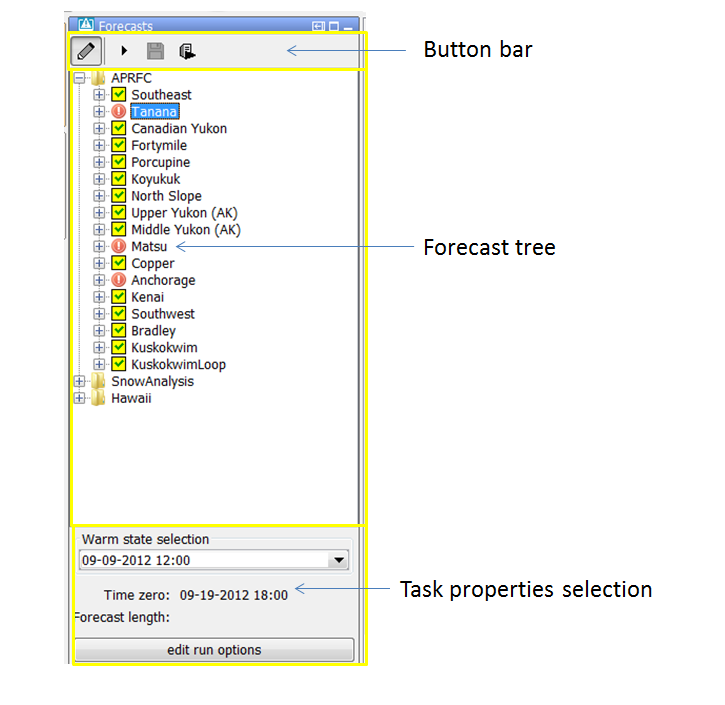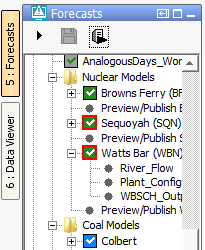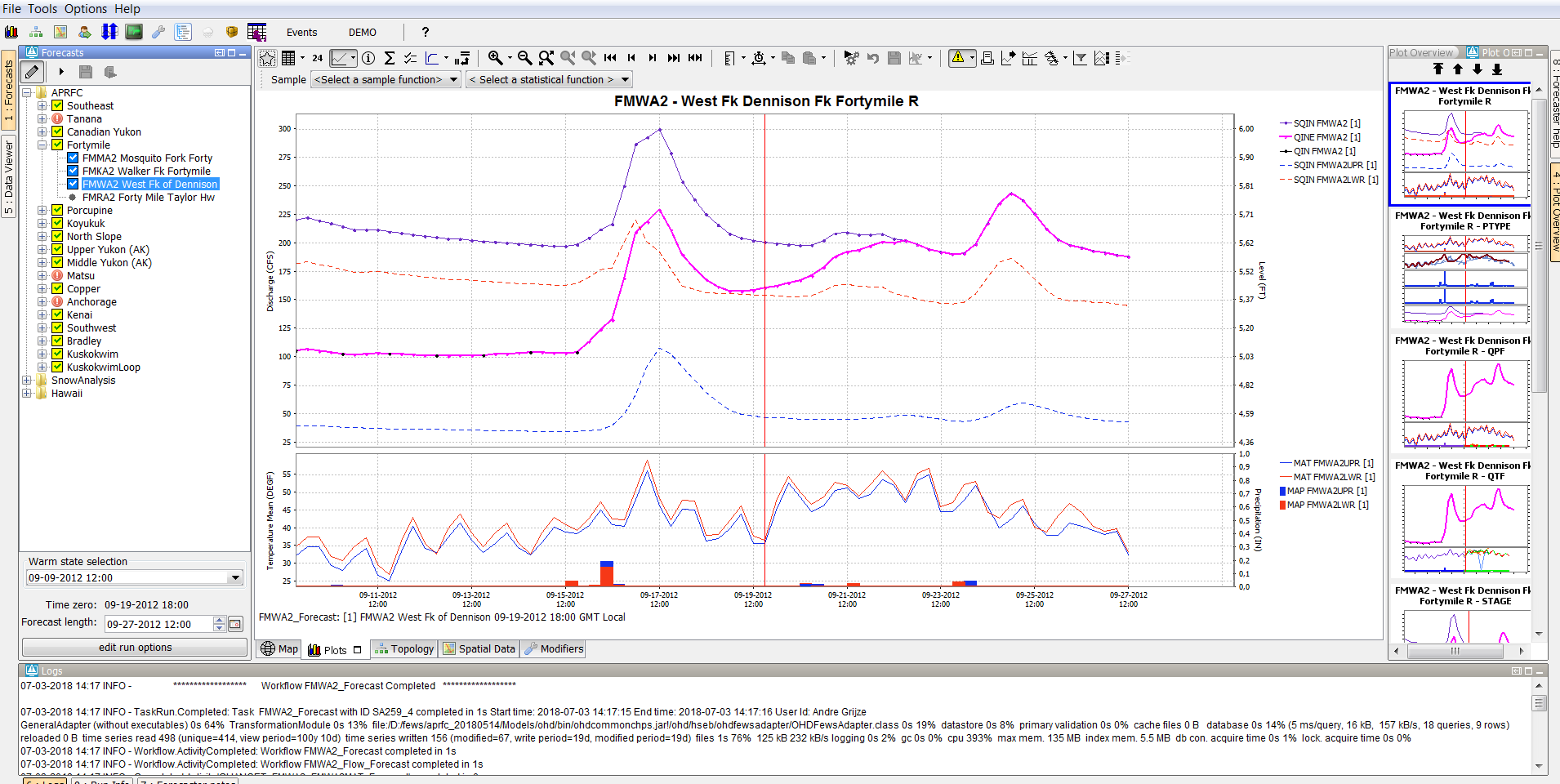...
The IFD (Interactive Forecasting Displays) consists of several panels. Each of these panels has a specific role in the process of creating a forecast with the IFD. In this chapter the functionality of each panel in the IFD will be explained. In
In the next chapter will be explained with a use case how a forecast can be created with the IFD by using the combined functionality of the separate panels.
...
The forecast panel (indicated in yellow rectangle above) plays a central role in creating a forecast in the IFD. The forecast panel shows a tree with all the forecast points for a region and a logical grouping of these forecast points.
It is also possible to show the work process of a forecaster in the forecast panel.
The forecast panel consists of three main sections each of them will be explained in detail in the coming sections.
Button bar
...
The top of the forecast panel shows a button bar. By default this button bar will look like this.
...
A workflow which is running locally or at the server will be indicated by an a curved arrow icon.
In the example below the workflow of the node ALKA2 is running.
...
The example below shows a screenshot of the same Delft-FEWS system as shown above but now with a different time zero.
...
A failed run is indicated by an icon with an exclamation markpoint. If the time zero of the failed run is equal to the time zero of the node the exclamation mark will be red otherwise it will be black.
...
To indicate this the node TUNA2 is is marked as yellow.
Time zero different and another item is invalid
...
then the icon will change into a grey icon with a yellow checkmark. Below a few examples.
Red outline
As of 2016.01, The IFD status icon can be surrounded by a red outline. See figure below. This red outline surrounding the IFD status icon indicates that the workflow task completed but not all of the data has been synchronised back to the operator client. This red outline feature is disabled for DDA clients as it pertains only to synchronisation in LDS clients.
Task properties panel
The bottom section of the forecast panel can be used to select the task properties of a node.
...
The modifiers panel is an important display in the IFD. It shows the modifiers which are created for the selected node in the forecast panel. Modifiers can be created, modified or deleted in this panel.
...
the lower part of the panel.
It also allows the user to make mods active and inactive with the checkbox in the column Active. A mod can be deleted by pressing the cross icon and a copy can be made pressing the copy-icon.
...
The topology panel shows the topology of the selected node. When a leaf node is selected the topology of the children of the parent node is shown. When a parent node is selected the topology of its children is shown.
The colors of the boxes in the topology change when a threshold is passed. The color of the box and the thresholds which are monitored are configurable in the threshold module of Delft-FEWS.
Plot display
The plot display is used to show scalar time series. Each topology node is connected to a display group. After selecting a topology node the first plot of that display group will be shown automatically. If there is already a node selected then Delft-FEWS will first to to find a plot with the same location and parameter as currently displayed if that is not possible then the first plot will be displayed.
When the IFD is started, there is always at least one plot display available. This plot is called the primary plot display. The primary plot doesn't have lock icon at the left of the toolbar. When a new plot display is started this plot will have a lock icon at the left on the toolbar. When a new plot displayed is started, by default the plot will be locked. The lock icon is indicated in yellow in the image below.
When a plot is locked, the display is locked to that set of time series. When the forecaster selects another node, the plot will continue to display the original time series and will change. However when new data is brought in, the plot is updated with new data. When the toggle-button is switched off (icon changes to unlock) the plot window is updated automatically when a new node is selected.
...
The plot overview is a panel which shows a thumbnail of each plot which is configured for the selected node. This panel gives an overview of the selected node. When a plot is selected the primary plot is automatically updated, also other plots display which are not locked (see previous chapter) are updated.
At the top of the panel there are four buttons. The first button selects the first plot, the second button selects the previous plot, the third button selects the next plot and the last button selects the last plot.
...
The forecaster help panel shows user provided documentation which is available for a node.
Currently Currently the following formats are supported: textfiles, images and pdf-files.
Users Users can place documents in a directory within predefined directories.
These directories can be configured in the topology.xml configuration file by adding a forecasterHelperDirectories element that contains a directory element for all directories.
...







